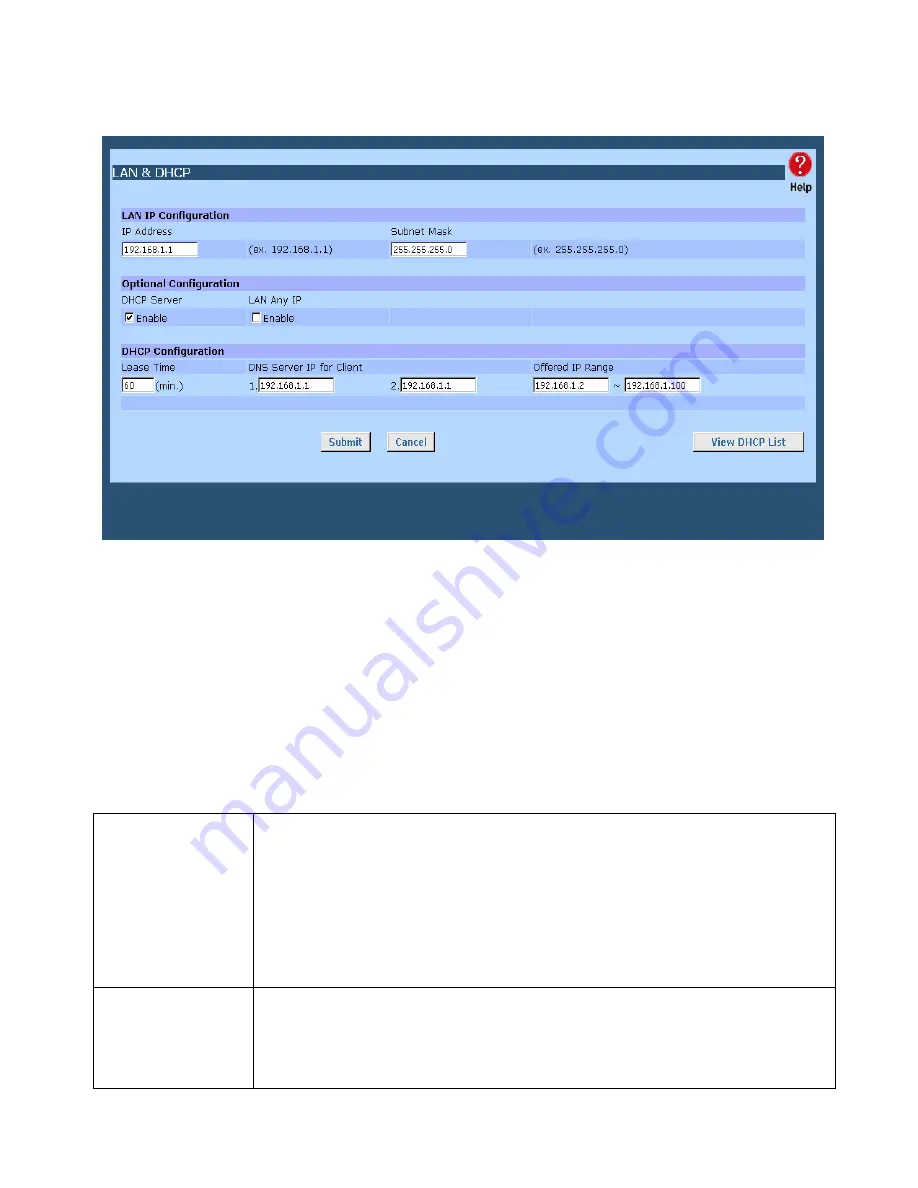
9. Select
LAN & DHCP
from the menu. You will see a screen like the example below.
Figure 2-3: LAN & DHCP
10. Ensure these settings are suitable for your LAN:
•
The default settings are suitable for many situations.
•
See the following table for details of each setting.
11. Save your data, then go to
Step 2, Installing The Load Balancer in your LAN
.
Settings – LAN & DHCP
LAN IP
Configuration
•
IP address
-
for the Load Balancer, as seen from the local LAN. Use the
default value unless the address is already in use or your LAN is using a
different IP address range. In the latter case, enter an unused IP Address
from within the range used by your LAN.
•
Subnet Mask
-
The default value 255.255.255.0 is standard for small
(class "C") networks. For other networks, use the Subnet Mask for the
LAN segment to which the Load Balancer is attached (the same value as
the PCs on that LAN segment).
Optional
Configuration
•
DHCP Server Setup
- If
Enabled
, the Load Balancer will allocate IP
Addresses to PCs (DHCP clients) on your LAN when they start up. The
default and recommended value is "Enable". (Windows systems, by
default, act as DHCP clients. This setting is called
Obtain an IP address
automatically
.) If you are already using a DHCP Server, the DHCP
Page 10
Summary of Contents for BR-6624
Page 1: ...BR 6624 Load Balancing Router Manual...
Page 2: ......















































